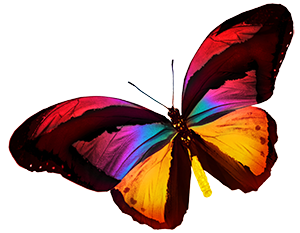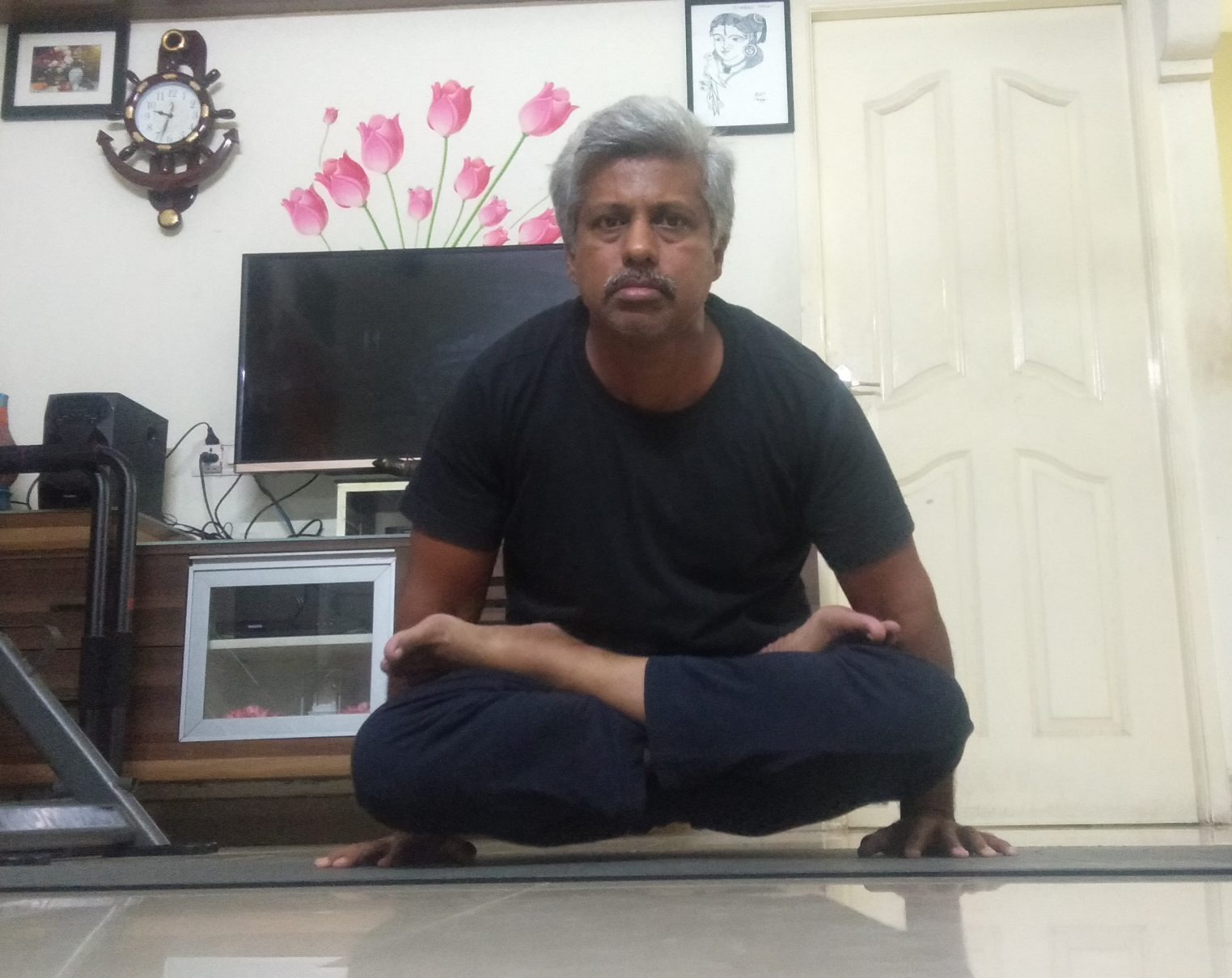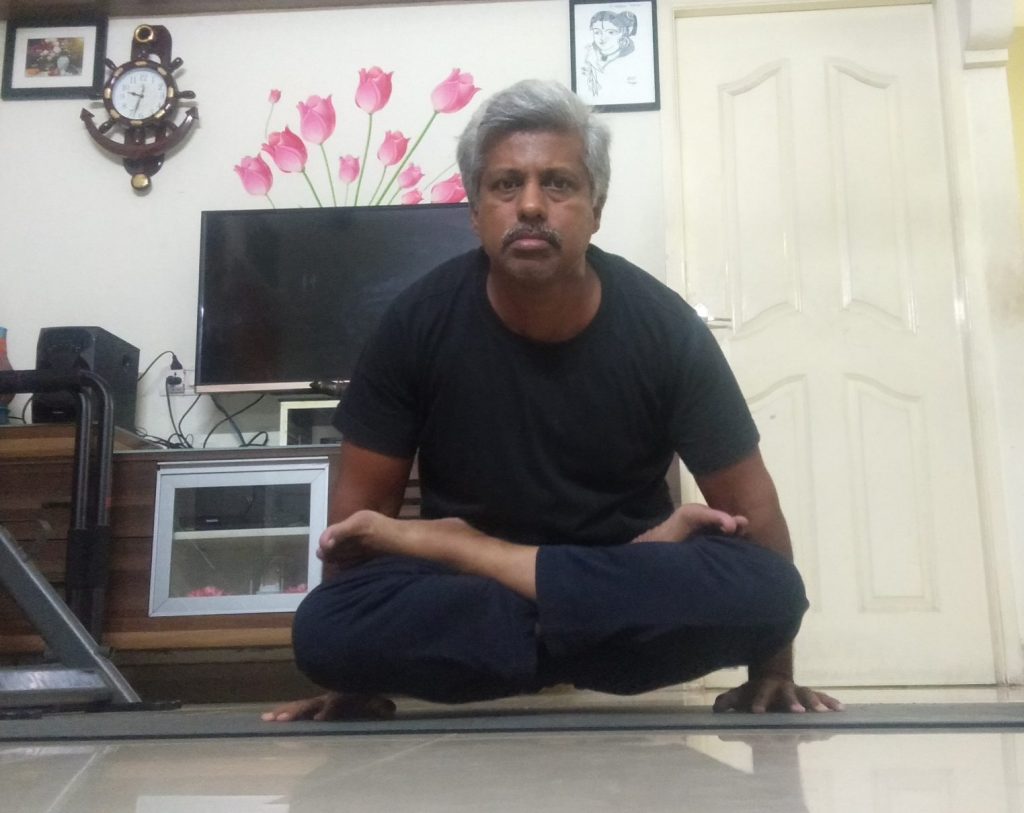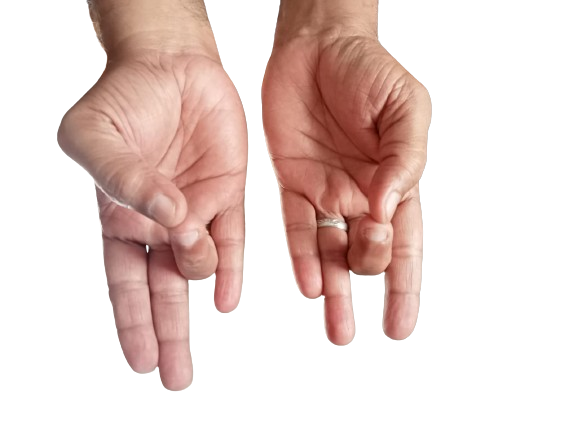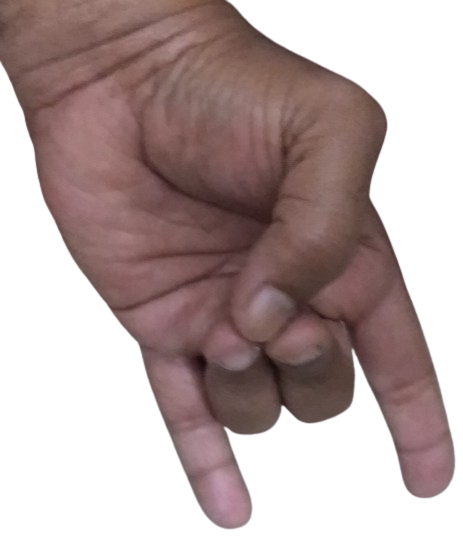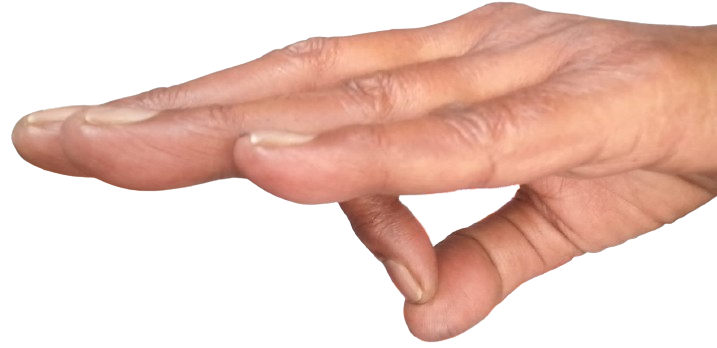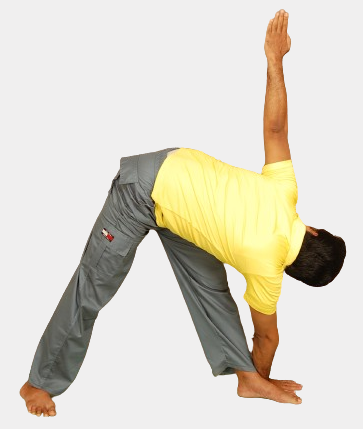In Sanskrit, ‘Tula’ means ‘scale’. Here, scale refers to balance, that is holding the weight of the body with hands in a balanced state. The pose is also called Elevated Lotus Pose in English.
Performing Scale Pose stimulates Manipura chakra and promotes energy flow in body and mind. Manipura chakra attracts life force from the universe. Proper functioning of this chakra promotes determination, self-confidence and self-respect thereby promoting mental balance.
Other Benefits of Scale Pose
- The pose strengthens digestive system and improves digestion.
- It strengthens shoulders and hands.
- Regular practice of the pose helps to tone and strengthen abdominal muscles.
- It boosts self-confidence.
- It improves focus.
- It is an effective yoga pose for stress relief.
Instructions
- Assume Lotus Pose. To check how to do Lotus Pose, click here.
- Place the palms on the floor by the sides of the body.
- With exhalation, place the palms firmly on the floor, contract abdominal muscles and lift the body off the floor.
- Hold the pose for 10-20 seconds. Inhale as you release the pose and get back to Lotus Pose.
Note
In case of difficulty in lifting the body off the floor, place a yoga block or any other firm object under the hands and lift the body.
Those with severe shoulder and wrist conditions should refrain from practicing the pose.
The pose is also not recommended to those with knee and ankle conditions.

Yoga Pose for Day 36 – Revolved Head-to-Knee Pose (Parivrtta Janu Sirsasana)
In one of our earlier posts, we have given the benefits of Head-to-Knee Pose and how to perform the same. In Revolved Head-to-Knee Pose, you stretch your hand over your body to hold the stretched leg. ‘Parivrtta’ in Sanskrit means ‘to revolve’,

Yoga Pose for Day 34 – Lion Pose (Simhasana)
In Sanskrit, ‘Simha’ means ‘lion’. The tongue of the lion is a weapon in itself. Lion’s tongue has the power to tear its prey’s body. Roaring in Lion Pose strengthens platysma, which is a sheet of muscle that extends from collar bone to the angle of the jaw. It promotes

Yoga Pose for Day 33 – Auspicious Pose / Gracious Pose (Bhadrasana)
‘Bhadra’ in Sanskrit means ‘auspicious’ and ‘gracious’. Hence, Bhadrasana is called Auspicious Pose or Gracious Pose. Auspicious Pose stimulates Root Chakra, which is the base for the health of all chakras, and promotes
